ANSELM KIEFER: EARLY WORKS – Press Release
Updated: 23 January 2025:
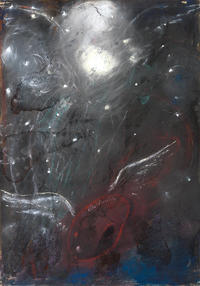
The Ashmolean Museum, University of Oxford, is pleased to present a landmark exhibition of German artist Anselm Kiefer. The group of 45 early works made during the period 1969–82 will feature paintings, watercolours, artist books, photos and woodcuts, rarely displayed in the UK before. The exhibition will also include three new paintings from Kiefer’s own collection, chosen by the artist especially for the Ashmolean show, which is organised in partnership with the Hall Art Foundation.
Born in 1945, Anselm Kiefer has become a towering figure of post-war art and is best known for his monumental paintings and installations. His immense body of work covers an array of cultural, literary and philosophical subjects. Kiefer’s artistic techniques and materials – which include straw, lead, concrete, fire, and ash – are similarly expansive, with pieces endlessly changing in their organic nature.
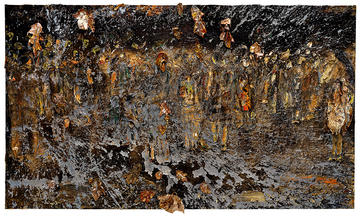
The exhibition opens with three recent paintings chosen by the artist to complement the selection of early works drawn from the private Hall Collection. They showcase the development and continuity in Kiefer’s work, introducing viewers to his unique and uncompromising practice.
The pictures take their titles from poems by Rainer Maria Rilke, highlighting the use of text and literary references, particularly in the German language, which has been an essential part of Kiefer’s art since the beginning. His recurring interest in historical, cultural, and personal memory is also clearly visible in these new paintings.
The exhibition then considers the origins of Kiefer’s practice with the emergence of themes and motifs to which he has consistently returned. Notably, he was among the first generation of Germans to directly confront the country’s national identity in the wake of the Third Reich, the Second World War, and the Holocaust. His first serious work was highly controversial: the Occupations series which challenged attempts to hide from the past. The series included photos of the artist dressed in his father’s Wehrmacht uniform performing the banned ‘Sieg Heil’ salute. These works were both a stand against forgetting and an exploration of older generations’ experiences of the period. Kiefer asks himself and his audiences uncomfortable questions: what did you do in Nazi Germany? What would you have done had you been there?
The exhibition also explores Kiefer’s work in the distinctly German tradition of woodcuts. Kiefer’s personal connection with wood stems from his early childhood – Kiefer’s grandfather was a carpenter whose tools he inherited, and the forest surrounding his home represented refuge and safety. Through this medium Kiefer explores German figures, themes and myths which had been used by the Nazis to underpin the ideology of the Third Reich. He often adds acrylic, oil and shellac paint to the hand-printed woodcuts to create unique compositions, typically with multi-layered symbolism that addresses how an artist can create work in the tradition of German culture after Auschwitz.
A recurring motif in Kiefer’s oeuvre has been the painter’s palette, referencing both his own art-making in post-war Germany as well as general artistic practices. Two paintings from 1974 of a voluptuous woman dancing in front of snow-capped mountains feature a palette outlined simply over the woman’s body. Based on 1960s drawing manuals from the US, they can be interpreted as ironic references to the rebirth of figurative painting in 1970s Germany. In a major watercolour from the same time, the palette is winged and acts as a symbol of Kiefer’s artistic spirit in celestial space – an alter ego flying without restrictions.
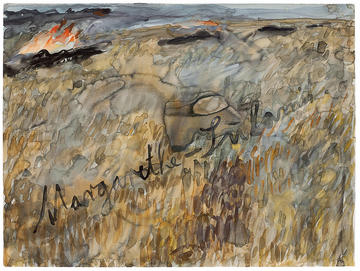
The show concludes by addressing Kiefer’s work with landscape, where he presents seemingly tranquil and beautiful places whilst reminding us of the violence and difficult memories associated with them. Often the second layer of meaning is conveyed by the title of a work, through words, place-names, or references to poems. The German-Jewish poet Paul Celan was a significant inspiration, particularly the poem ‘Death Fugue,’ written immediately after the war and which echoes in many of Kiefer’s works. In the powerful watercolour, Margarethe – Sulamit (1981) Kiefer seeks a new artistic language after the horrors of the Holocaust. He combines symbolic references to Celan’s macabre poem that remind the viewer subconsciously of the most barbaric chapters of German history, with natural elements that point to the constant transitory nature of being.
Dr Xa Sturgis CBE, Director of the Ashmolean, says: ‘It is an extraordinary honour for the Ashmolean to hold an exhibition of one of the world’s most important living artists, particularly in his 80th year. Throughout his career, Anselm Kiefer has pushed the boundaries of what is possible in art, challenging what art can and should do in response to the world around us. This exhibition takes us back to Kiefer’s origins and aims to offer a new understanding of his long and distinguished career.
‘We are sincerely grateful to Andy and Christine Hall for their exceptional generosity in lending their unique collection to the exhibition. And we are indebted to the artist, Anselm Kiefer himself, and to his studio in France, for their trust and close collaboration.’
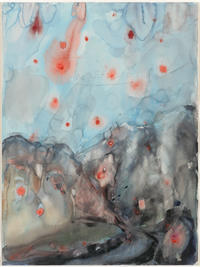
Dr Lena Fritsch, Curator of Modern and Contemporary Art at the Ashmolean Museum, says: ‘This exhibition showcases the signature themes, subjects, and styles of Kiefer’s art, while also providing a more personal context for the large-scale installations with which he is often associated today. The works feature references to recent German history as well as to Romanticism and Expressionism, ancient Nordic mythology, and wider European philosophy, science, spirituality, and culture. In presenting this exhibition, the Ashmolean has felt a strong sense of responsibility to translate and explain the relevant German contexts and cultural memories that make Kiefer’s early works so multi-layered, strong, and poignant.’
ENDS
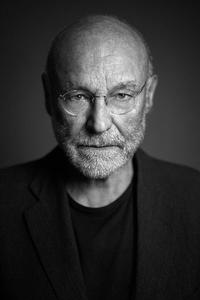
About the artist
Born in Donaueschingen, southern Germany in 1945, Anselm Kiefer studied law, literature and linguistics before attending the Academy of Fine Arts in Karlsruhe, and later in Düsseldorf, during which time he had contact with Joseph Beuys. Kiefer was selected with Georg Baselitz for the West German Pavilion at the 39th Venice Biennale in 1980 and his work has since been shown in exhibitions across the globe. In 2020 Kiefer was honoured with a permanent installation of his work in the Panthéon in Paris, commissioned by President Emmanuel Macron. Currently he lives and works outside Paris.
Contact details
Claire Parris, Press and Publicity Manager Oxford University Museums and Gardens
claire.parris@glam.ox.ac.uk / +44 (0)7833 384 512
Sarah Holland, Press Assistant Oxford University Museums and Gardens
sarah.holland@glam.ox.ac.uk / +44 (0)1865 278 285
Press images
Images for editorial use are available to download at: https://go.glam.ox.ac.uk/AnselmKiefer
Notes to editors
Exhibition: Anselm Kiefer: Early Works
Dates: 14 February-15 June 2025
Venue: John Sainsbury Exhibition Galleries, Ashmolean Museum, Beaumont Street, Oxford OX1 2PH
Open: daily, 10:00-17:00
Admission: £8.10-£18.00, tickets available at the Museum or online
Catalogue: £25.00 available at the Museum or online
Credits
Anselm Kiefer: Early Works is presented in partnership with:
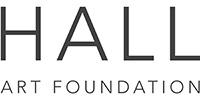
The exhibition is supported by:
White Cube
The Patrons of the Ashmolean
Images above
Anselm Kiefer (b. 1945)
Untitled, 1974
Mixed media on paper, 62.5 x 44 cm
Hall Collection. Courtesy of the Hall Art Foundation. © Anselm Kiefer. Photo: Adam Reich
Anselm Kiefer (b. 1945)
Wer jetzt kein Haus hat (Whoever has no House now), 2023
Emulsion, acrylic, oil, shellac, lead, string and chalk on canvas, 190 x 330 cm
Collection of the artist. Courtesy of White Cube. © Anselm Kiefer. Photo: Georges Poncet
Anselm Kiefer (b. 1945)
Margarethe - Sulamit (Margaret - Shulamite), 1981
Watercolour on paper, 42 x 56 cm
Hall Collection. Courtesy of the Hall Art Foundation. © Anselm Kiefer
Anselm Kiefer (b. 1945)
Die Etsch (The Adige), early-1970s
Watercolour, gouache and ink on paper, 56 x 41 cm
Hall Collection. Courtesy of the Hall Art Foundation. © Anselm Kiefer. Photo: Mark-Woods.com
Anselm Kiefer, 2023
Portrait by Till Brönner, 2023




